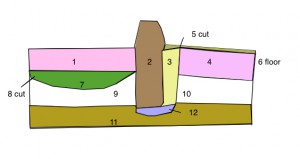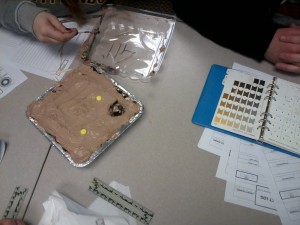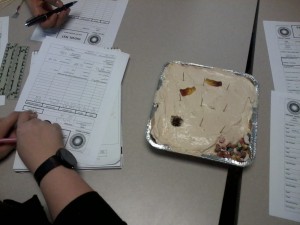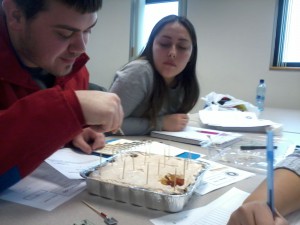
The aim of this week’s class was to introduce the students to context, stratigraphy, and all the field paperwork required to document it. In archaeology, we use a concept known as the Harris Matrix to describe depositional history. Within the Harris Matrix, each action is represented by a context. A positive context is when something has been added to a site, like a layer of soil. A negative context is when something has been removed, like a pit that has been dug out for a trash dump. The cut of the pit is the negative context and the fill is the positive context. The law of superposition means that the last action performed will be the first context found. The classic example is a layer cake. The last action (the frosting) will be the first layer cut into.
So to demonstrate this in class, I (Kimberlee) made 3 “dirt” cakes. You can find the recipe here. In addition, I bought candy rocks, gummy bones, gummy coke bottles, candy coins, and sprinkles (to stand in for shells) and assemble 3, completely edible 8″ x 8″ archaeological sites. One site contained the remains of stone foundations of a historic structure, one was a prehistorical burial, and one was a shell midden with a hearth feature. Oh yes, and I bought tiny shovels (doll house size) for the students.
Students worked in groups of three. They had to lay lines of shovel tests, keep a site plan, and fill out shovel test forms for each one. If they came across a feature, they could open an excavation unit. Again, paperwork was required. You can find our ArtifactLog, PhotoLog, EUform, and STPform field forms here.



The students did a great job! Mistakes were made (the burial was complete destroyed), but that was part of the learning process. Even when you know what is under the surface, you don’t always find it!
The verdict: archaeology is delicious, but too much of it will make you sick!
